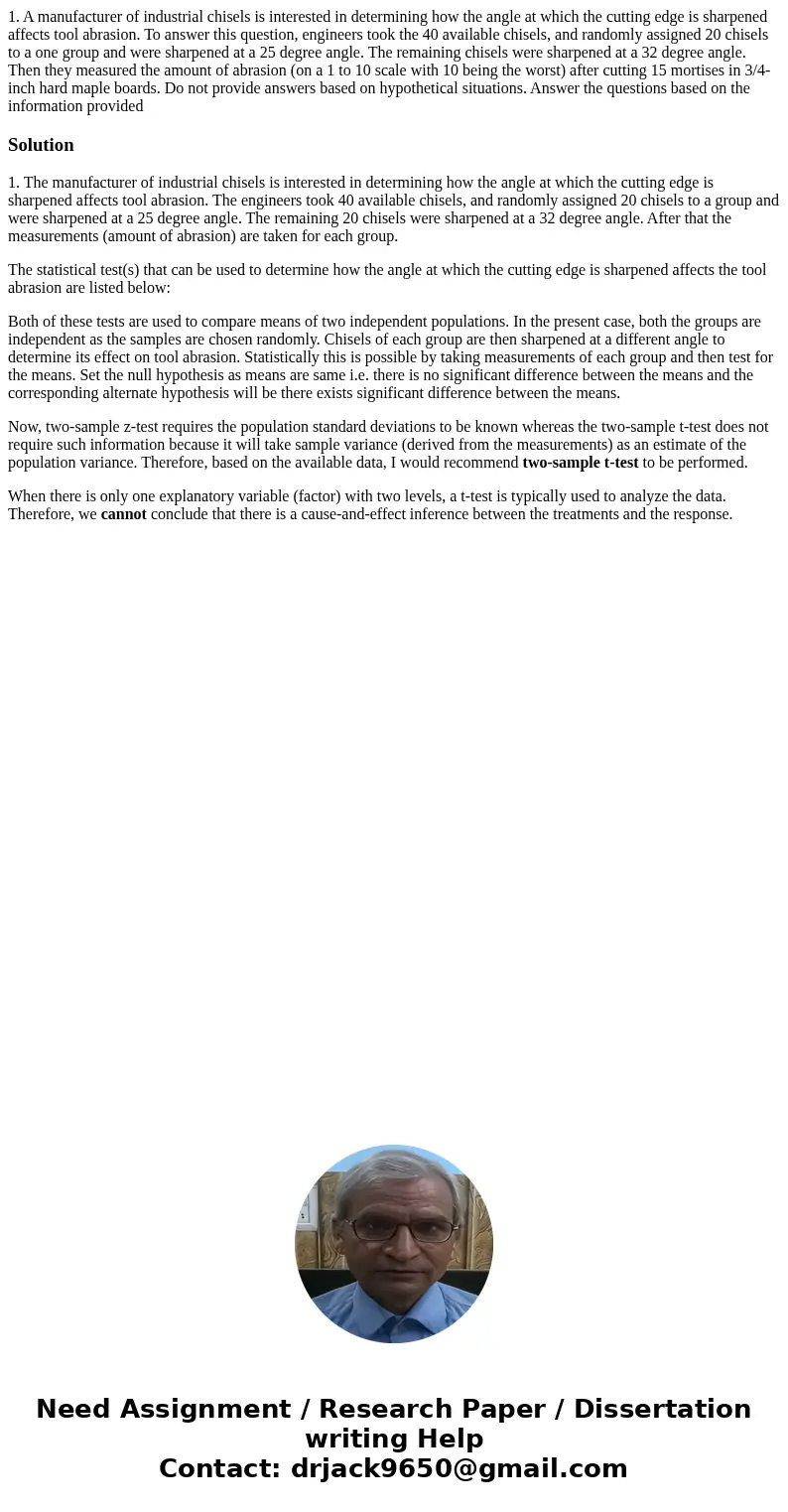1 A manufacturer of industrial chisels is interested in dete
Solution
1. The manufacturer of industrial chisels is interested in determining how the angle at which the cutting edge is sharpened affects tool abrasion. The engineers took 40 available chisels, and randomly assigned 20 chisels to a group and were sharpened at a 25 degree angle. The remaining 20 chisels were sharpened at a 32 degree angle. After that the measurements (amount of abrasion) are taken for each group.
The statistical test(s) that can be used to determine how the angle at which the cutting edge is sharpened affects the tool abrasion are listed below:
Both of these tests are used to compare means of two independent populations. In the present case, both the groups are independent as the samples are chosen randomly. Chisels of each group are then sharpened at a different angle to determine its effect on tool abrasion. Statistically this is possible by taking measurements of each group and then test for the means. Set the null hypothesis as means are same i.e. there is no significant difference between the means and the corresponding alternate hypothesis will be there exists significant difference between the means.
Now, two-sample z-test requires the population standard deviations to be known whereas the two-sample t-test does not require such information because it will take sample variance (derived from the measurements) as an estimate of the population variance. Therefore, based on the available data, I would recommend two-sample t-test to be performed.
When there is only one explanatory variable (factor) with two levels, a t-test is typically used to analyze the data. Therefore, we cannot conclude that there is a cause-and-effect inference between the treatments and the response.

 Homework Sourse
Homework Sourse